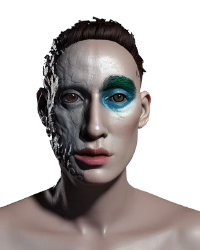
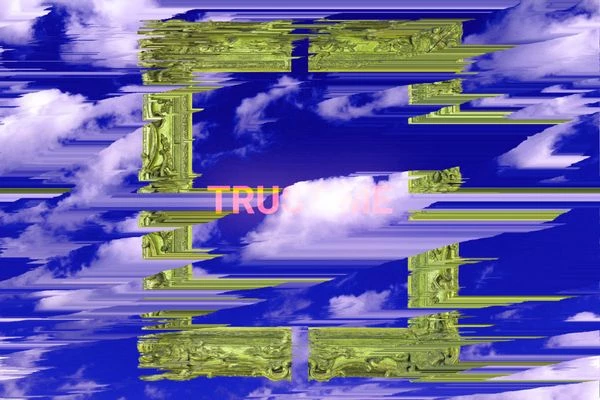
- Date
- 30 NOVEMBER 2022
- Author
- DAVIDE ANDREATTA
- Image by
- DOMENICO BARRA
- Categories
- Aesthetics
“My imagination is craving for new lands to research” An interview with Domenico Barra
Domenico Barra is an Italian artist, educator and visual content creator working in the field of digital art and dirty new media. His claim that his “aesthetics can be found in the realm of machines’ failures where I interpret the glitch in various environments” is the main topic of the present interview.
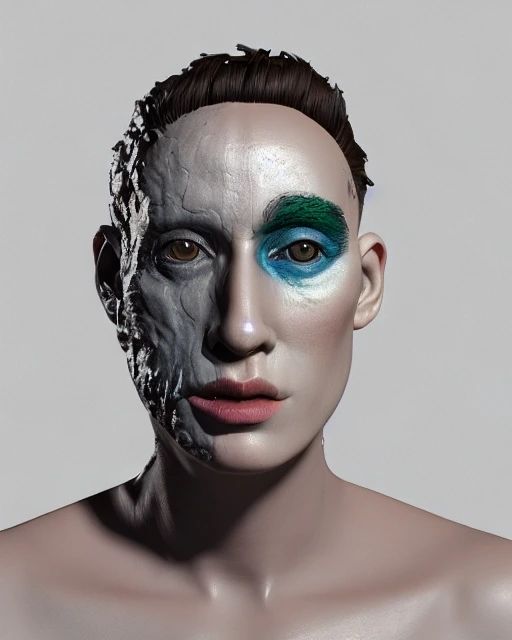
Glitch art reminds us that our relationship with technology is not a given, it is not monolithic and it can be exposed to disturbances. It undergoes continuous negotiations and I’m curious to know what kind of relationship you are trying to build with technology.
The approach must always be critical, so an unstable relationship can raise conflicts that can surely unveil some slippery slopes, but also some important opportunities. Especially when it comes to art, I prefer a counter-narrative proposing an alternative perspective that shows the dark sides of technology’s impact on our personal and social health, but also playful and ironic voices that wittily avoid falling too deep into the predictable rhetoric and obsolete dystopian mainstream narrative. Of course, at the same time, I truly believe that a lack of digital literacy could be highly problematic and lead to some sort of Black Mirror state of life. In my works, I raise the flag on some issues, inviting viewers to a reading of the events that hopefully will make the public more aware of the issues, but at the same time, that different ways are also possible. I aim to bring to the table questions, invite the audience to dialogues, and through that look for collective answers. This is the approach I have with people who come to my shows and talks or even read my tweets, but especially with my students at the Rome University of Fine Arts (RUFA). I do not expect them to become glitch artists, not to deploy glitch art techniques into their creative methodology and processes. I hope they will through glitch art acquire an active and critical thinking mindset, and learn and experiment with new ways to see the technology they use. I really believe that tactical artistic new media practices like glitch art could bring benefits not just to art students, but to every young mind starting to develop an idea of the world they live in.
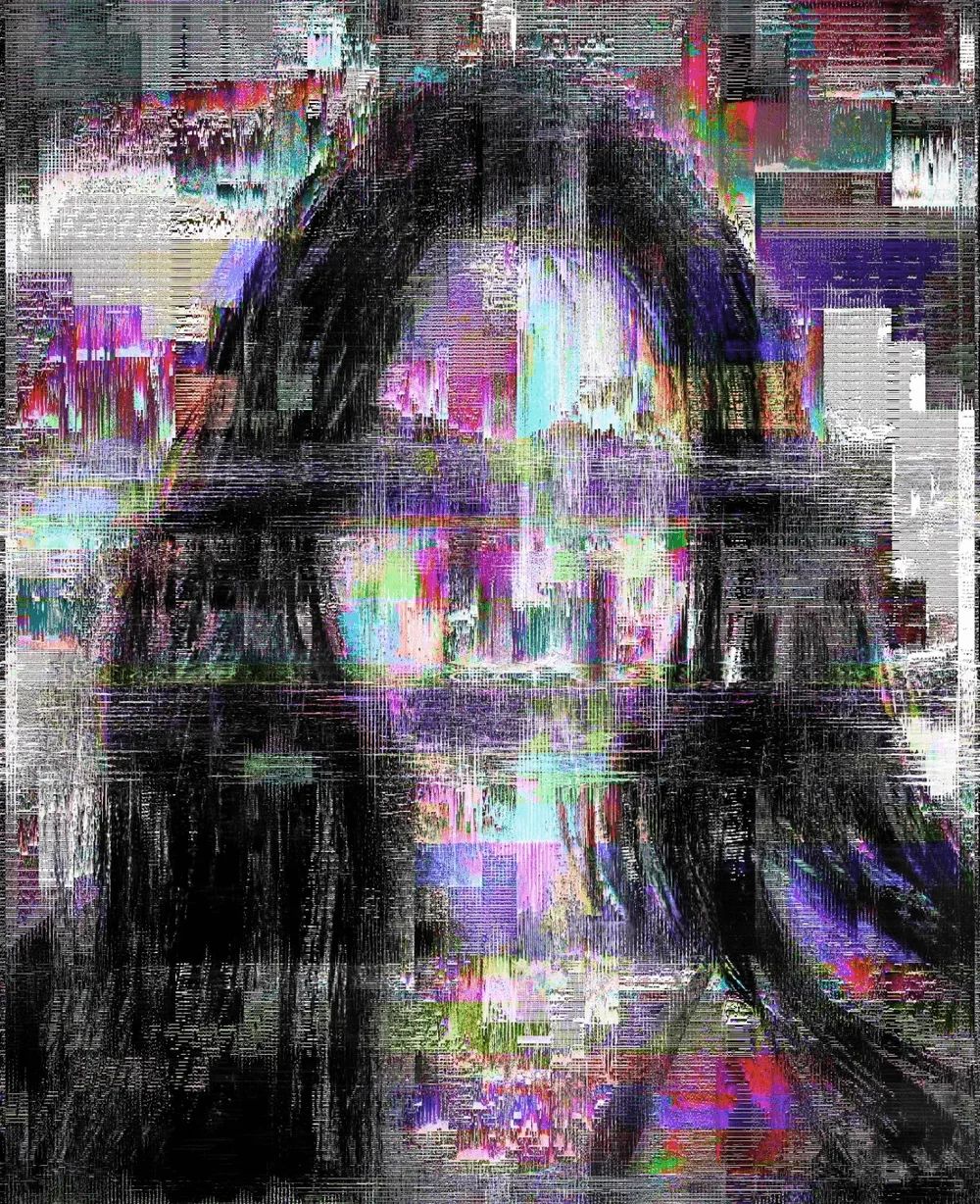
Do you see any revolutionary potential in glitch? Is it more than a mere style?
I believe that the aesthetic of glitch art is a very complex one, far more complex than what we are used to thinking, that in most cases refers to a cyber futuristic scenario. The definition of glitch artist I am more fond of, and the one I have approached with true dedication was articulated by my fellow artist, curator, educator, and dear friend Nick Briz in his essay Glitch Art Historie[s]. contextualizing glitch art -- a perpetual beta. In this text, Nick refers to the glitch artist as an explorer. He notes that the term is mostly used for the act of searching or traveling physical spaces, but it can also be a metaphor for a person exploring the internet, sexuality, etc. Briz then also adds that "in scientific research, exploration is one of the three purposes of empirical research (the other two being description and exploration). Exploration is the attempt to develop an initial, rough understanding of some phenomenon". At this point, he states that in all these ways a glitch artist is like an explorer. This has been my approach to glitch art where the glitch became my key to exploring and interpreting, investigating, and narrating the worlds I live through. It allowed me to develop a critical and analytical, experimental, and curious mindset, that I also apply outside of the art, glitching becoming my culture and philosophy to hack and decode the bugs of life because nature is imperfect and finding ways to see through the anomalies could enable a deep exploration and understanding of the different shades and grades of our evolution, this regarding strictly my inner self and as an individual part of society and society itself. Approaching glitch art this way, as an explorer, I think this can be really revolutionary on a personal level and/or collective mutual ground.
With AI’s current surge in popularity many questions are being posed. Oftentimes there is a misalignment between the prompt – read “expectations” – and the final result: do you consider this a sort of glitching?
If we want to dive deep into the metaphorical interpretation of the relationship between a machine and a human as this particular case might require, we must then envision the two as a whole linked/networked system, where the artificial being becomes the augmented extension of our biological intelligence, the mind's techno eye of expanded fantasies. In this flow regulating and nourishing this relationship, of course, a short circuit could happen that will lead to something unexpected, but that might be a cultural short-circuit, or as we might also could dare to call it a "glitch". I will explain. First of all, we are talking about a case where the machine is not operating and elaborating with data present in our subconscious. The case we are talking about is the one where the machine grabs data from its own or third-party datasets, consequently acting as a body injecting into our imagination foreign visions, and depending on what extent we dare to push ourselves deep into the machine's "dream", more or less predictable and/or altered and/or unexpected information could be taking shape in front of our own eyes. This is because the flow of data happening between the human input and machine output is programmed, and it is designed to roll and lead that way. In fact, in many of those prompt-based AIs, we are presented with options that pre-craft the possible machine-rendered visual outputs. We program with those options we select the output the machine will deliver and that we were somehow previously guessing/imagining. And I am not considering very probable bias coded within the programs, or spread across the datasets, and that we are not related to and that will, of course, misalign with our expectations. There are no interferences in this relation, it all (almost) flows as it should. I haven't explored more into how to actually alter this flow beyond its standards, so to conclude, based on my knowledge, I would not dare to call these events technically glitches, but as they look to our eyes as glitches, we could appropriate the terminology in a context useful for the concept of our storytelling. Personally, I would rather dare to call a glitch a very primitive form of generative artificial intelligence manifestation where a machine, presented with a group of misaligned data, was called/forced to elaborate and give meaning to those anomalies and finally complete its task, and present to use something we would define as a glitch, something atypical, but completely normal for the machine. It is important to clarify that I am talking about forced and wild glitches, not programmed ones as those created using apps and plugins and that those I am talking about are very often referred to as created by the artist. Glitch artists put systems in the conditions to generate glitches, and this means that the glitch is the work of machines, not the artists. The artists declare the event a glitch, select it, and appropriate it as the chosen artifact for their own purposes.
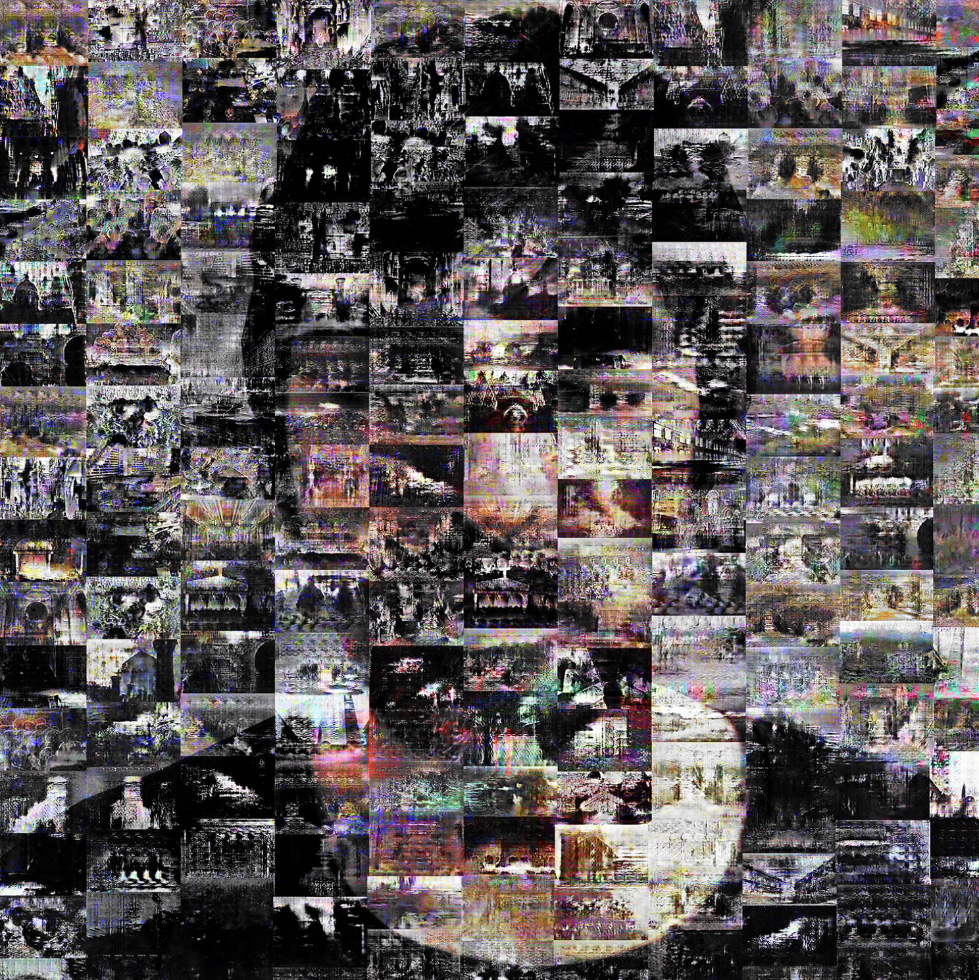
Failure plays a central role in the glitch aesthetic. Very distant from the dominant neoliberal discourse, can failure contribute to creating a safe space for threatened communities? If success is deemed as individual, can we say that failure is a collective form of protest?
In his book Imperfection: A Natural History, the evolutionist and professor of Philosophy of Biological Sciences Telmo Pievani writes that "Nature is not perfect: perfection is just our story". I think this point is essential to understand that as much as the evolution of species is defined by imperfections and that life on this planet would not be possible without imperfections, so it wouldn't be possible without failures and that success is just our story, it's the dominant narrative but not the "real" one when excluding failures, and surely not the only one that matters. So, whatever counter-narrative against this constructed myth that has enslaved our thought to fight and strive for success at all costs creates many frictions among individuals and communities, and even within our inner self, where stories of failures only trigger negative thoughts and not opportunities for creating alternative perspective and directions, I truly believe that stories of failures become then a common ground for building a more enlightening and aware understanding of our human conditions. I usually call a glitch an act of redemption. In one of my last ongoing projects Disordinary Beauty. The thorn sense of beauty, the glitch is the redemption of the ugly, of the imperfect, of the atypical against beauty, perfection, and order. In this precise context I am referring to the constructed standards of beauty building and spreading within and across social media like Instagram by influencers where in each of their selfie they stage their splendor, the simulacra of their life success. I appropriated some of these selfies and through a series glitch generative scripts, I reprogrammed the selfies' order/standard until the original images are completely altered, and the online personas are completely erased from the pictures leaving space for imperfect, creepy, haunting, unknown figures, the ugly one, the losers, the lost souls in the short circuits of our society. Anonymous portraits where everyone who doesn't fit in the Instagram mainstream paradigm of beauty can reflect themselves into. Redemption of the atypical beauties against the mainstream beauty paradigm, highlighting the conflict of Ugly = Failure vs Beautiful = Success.
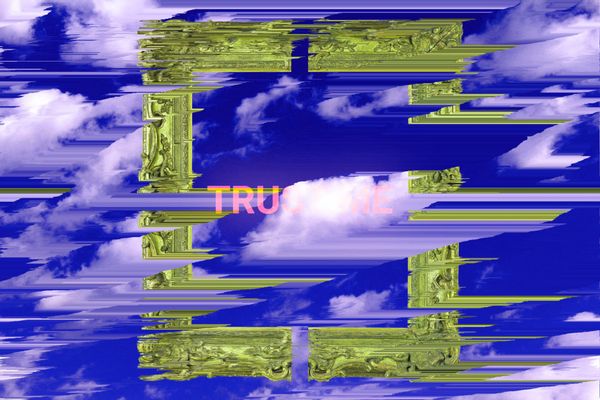
Expanding on my previous question, can glitch prevent the commodification of images? Or is a broken image still an image?
The glitch aesthetic has become very mainstream, and glitches have been commodified through the spreading of smartphone apps and software plugins of all sorts. But it must be said that as new technologies and new formats become available, more and new glitches will enter our daily life, through sounds, videos, and still images. They will carry new meanings, and a new urge for glitching will arise to explore these new fields, shifting away from the mainstream idea of what a glitch is and looks/sounds like.
Erased human is the title of one of your projects where an attempt is made to exclude human creativity from artistic creation. Can you elaborate on that specific work? Also, how is the erasure of your own self going?
When it comes to glitches, as mentioned in one of my previous answers, we tend to believe that the glitch is the work of the artist. The glitch is made by a system, we artists select those more appropriate for the intended use. The same happens with AI. The machine is not aware of what is making, it operates under our direction and surveillance. We select the images we then go on calling art. In Erased Human I wanted to push to the extreme this situation and confront the audience with this question. If humans are in control of the artificial intelligence when it comes to designing its mind, building the dataset training and other rules, and we select options to have control on the final output, can we really talk about machinic art? I wanted to attempt, being aware of failing, to try and erase human from the creative process of a machine. To erase my print from the creative process, I invited a GAN (generative adversarial networks) artist, the Creative Morph model by Playform, to repeated a multiple cycles of training starting from a dataset of images I phad picked and going on until the final outputs were completely different from the content of the dataset we started from, considering this final group of works as the actual art made by a machine. I then brought into the process a third player, a computer vision intelligence system, Clarifai, General Image Recognition Model. I showed the images made by the AI artist to the smart-eyed AI critic who had the role to choose what's art and what is not. The results obtained per each image were slightly different, even if most of the pictures used looked pretty much the same. In the end, did I really erase my presence in this process? Were other human prints erased from the work completed by both systems? To what extent are AI systems completely autonomous? My conclusion was that we push the definition of AI art too far. Because the machines we developed are software that elaborates images based on some specific attributes and directions we give, and deeply influenced by what we call art and what we consider as such based on our knowledge and idea of art. It all looks, and feels too much human filtered. We are probably still a bit far away to see a work of art truly coming from the mind of a machine. What art made by machines will truly look like? This is what I really would like to see, probably it will look like a glitch.
How do you see the glitch art scene evolving in the next few years? Can evolution be hacked/ glitched? And what role do you think AI will play in this process?
The glitch art scene will expand as more technologies carrying their own glitches will become available to the public and our idea of what a glitch looks like will probably change, as much as the way we hunt, force, perform, and explore glitches will evolve into something else. I am thinking of bio hacking technologies and methodologies that are already becoming more accessible and interesting to a wider audience and finding ways in the work of artists. This is a field I am willing to explore deeply in the upcoming years, especially considering that artificial intelligence will open and expand new frontiers of investigation and application and the ways those can be experimented, troubled, hacked, my imagination is craving for new lands to research. We will always strive for a new vision of life and new meanings regarding our own existence and the way we can depict, question and narrate it. A glitch will always semantically find a contextualization in art and its poetics because our society will always be defined by states of instability, disorder and imperfection, and the drive for destruction and redemption will always be alive in us, it's all in our nature. Long live the glitch.